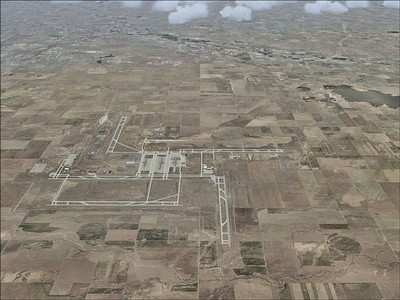Official Admits Report Is "Alarming," But Says Things Aren't So
Bad
An internal FAA memo obtained by the local CBS affiliate
paints an "alarming" picture of air traffic control in the skies
over Denver, CO. That's not our take, or even the opinion of the
controllers union... but rather the words of one FAA official.

Kathryn Vernon is Director of Western Terminal Operations for
the agency. She told KCNC-4 in Denver the two-page memo -- sent out
last month by Kevin Stark, Acting Air Traffic Manager at the Denver
Air Route Traffic Control Center (ZDV) -- "leaves a lot of
questions out there" about the state of air traffic control
operations over the western city. But, she adds, there is "not a
safety issue" in Denver airspace.
Stark would seem to differ. In the February 19 memo, he writes
ZDV "has indicated that the loss of a large number of their
experienced employees, the relative inexperience of many of their
current controllers, and the increase in volume has created a
situation they can no longer accept. They have indicated that the
volume issues created by eight different routes flowing into their
airspace routinely creates situations that put their controllers at
risk, and they are unable to provide the level of service our
customers deserve."
 The
station notes such arguments aren't exactly new,
particularly throughout the years-long war of words between
the FAA and the National Air Traffic Controllers
Association over a new contract... but the station
also points to an increasing number of spacing incidents over
Denver in recent months.
The
station notes such arguments aren't exactly new,
particularly throughout the years-long war of words between
the FAA and the National Air Traffic Controllers
Association over a new contract... but the station
also points to an increasing number of spacing incidents over
Denver in recent months.
Two separation errors were noted by KCNC earlier this year. On
January 23, a Frontier flight inbound from Seattle at FL250 was
inadvertently steered by ATC towards a conflicting SkyWest flight
at the same altitude; six days later, a United 757 was turned
towards a commuter plane also on approach to Denver International
Airport (DEN). In both cases, traffic collision avoidance systems
(TCAS) in the cockpits of the planes involved directed the aircraft
out of harm's way. In the case of the latter, estimates show the
United flight came within about a half mile horizontal from the
smaller plane, and 800 feet vertically.
"If the pilots have to use their ... collision avoidance
systems, the system has failed," said Bruce Lampert, a pilot and
aviation attorney, adding TCAS is "the third layer of safety, the
last safety net to prevent mid-air collision and death."
Without descending into similar hyperbole, Stark's memo appears
to be one of the few edicts from FAA officials that give weight to
NATCA's claims of understaffing, and controller inexperience. Not
surprisingly, Vernon took steps to downplay that message.
"As the letter is written, I would agree with you it sounds
alarming," she said. "And I understand the letter makes it look
like we had a situation we had to get under control. I would
disagree with that."
Vernon notes FAA figures showing the number of controller errors
in Colorado have declined so far in 2009, compared with the same
time period in 2008... despite an admitted drop in both the number
of overall controllers at ZDV, as well as a marked rise in the
percentage of those controllers who are still undergoing
training.

"There is no reason for the public to lose confidence," she
continued. "In looking at Mr. Stark's letter, I agree it leaves a
lot of questions out there. But there is not a safety issue in the
Denver airspace and Colorado airspace."
 NTSB Final Report: Rutan Long-EZ
NTSB Final Report: Rutan Long-EZ ANN FAQ: Turn On Post Notifications
ANN FAQ: Turn On Post Notifications Classic Aero-TV: ICAS Perspectives - Advice for New Air Show Performers
Classic Aero-TV: ICAS Perspectives - Advice for New Air Show Performers ANN's Daily Aero-Linx (06.28.25)
ANN's Daily Aero-Linx (06.28.25) Aero-News: Quote of the Day (06.28.25)
Aero-News: Quote of the Day (06.28.25)





